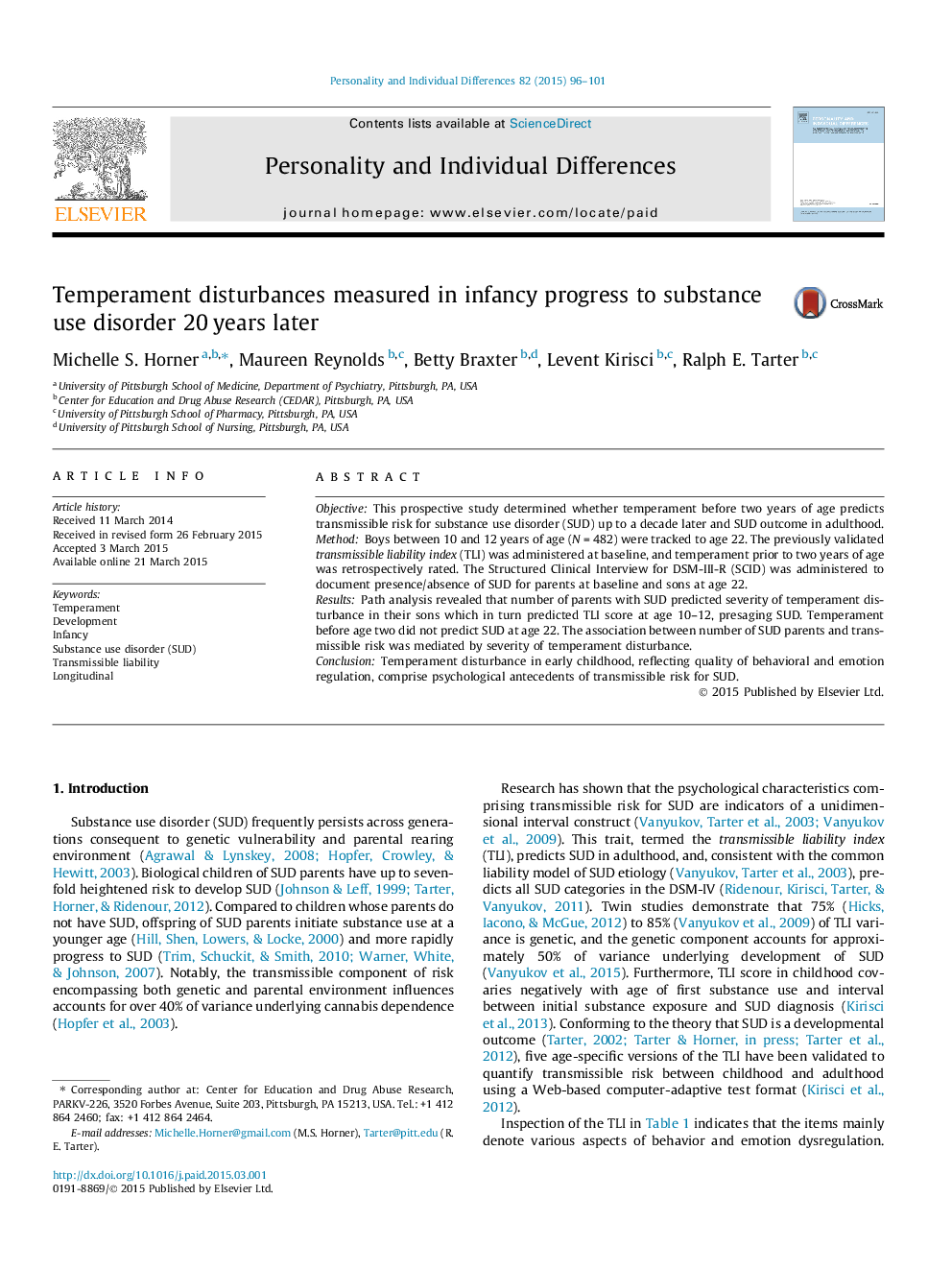| Article ID | Journal | Published Year | Pages | File Type |
|---|---|---|---|---|
| 890086 | Personality and Individual Differences | 2015 | 6 Pages |
•A phenotype of risk for addiction is measured by the transmissible liability index (TLI).•Temperament disturbances in infancy predict TLI score in late childhood.•TLI score measured in childhood predicts substance use disorder (SUD) in adulthood.•Parental SUD predicts infant temperament disturbances and TLI score in late childhood.
ObjectiveThis prospective study determined whether temperament before two years of age predicts transmissible risk for substance use disorder (SUD) up to a decade later and SUD outcome in adulthood.MethodBoys between 10 and 12 years of age (N = 482) were tracked to age 22. The previously validated transmissible liability index (TLI) was administered at baseline, and temperament prior to two years of age was retrospectively rated. The Structured Clinical Interview for DSM-III-R (SCID) was administered to document presence/absence of SUD for parents at baseline and sons at age 22.ResultsPath analysis revealed that number of parents with SUD predicted severity of temperament disturbance in their sons which in turn predicted TLI score at age 10–12, presaging SUD. Temperament before age two did not predict SUD at age 22. The association between number of SUD parents and transmissible risk was mediated by severity of temperament disturbance.ConclusionTemperament disturbance in early childhood, reflecting quality of behavioral and emotion regulation, comprise psychological antecedents of transmissible risk for SUD.
